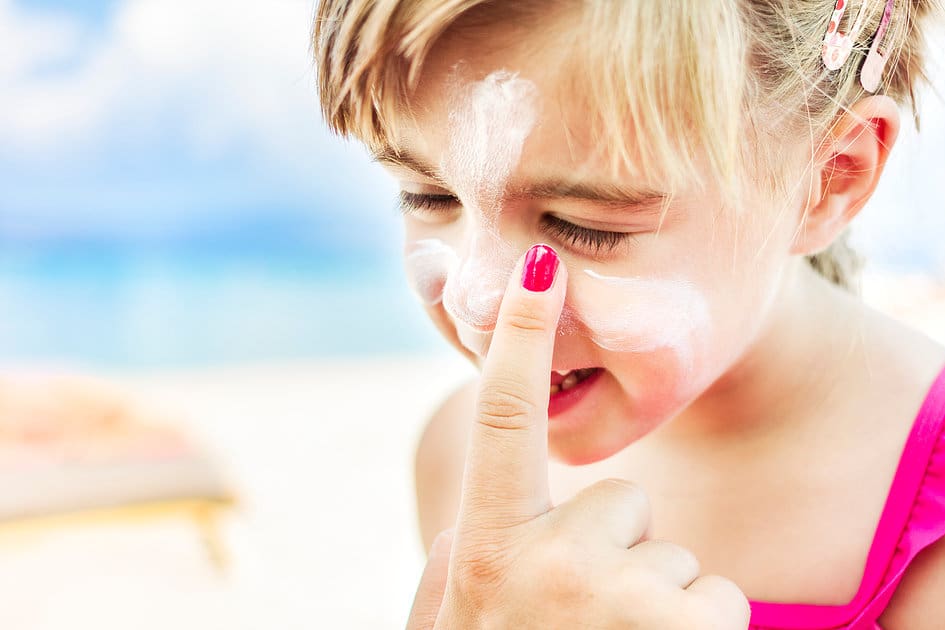
While soaking up the sun is practically the name of the game during the summer, those intense rays of light can wreak havoc on your child’s skin if you’re not protecting it with some sort of sunscreen. Below are some handy tips for choosing and using sunblock on your kids, so that you can keep their skin safe throughout the summer.
1. Most dermatologists recommend choosing a sunscreen that has a minimum Sun Protection Factor (SPF) of 30, and during the summer months, you might want to bump that number up to 50 or even 75. The SPF contained in sunblock will protect your child’s skin from harmful ultraviolet rays that can cause skin reddening and sunburn.
2. Apply sunblock generously. Bear in mind that the effectiveness of the sunblock’s SPF will be influenced by the amount of sunscreen that you apply to your child’s skin. For example, in order to achieve the full SPF of 30 with an SPF 30 sunblock, dermatologists recommend using roughly 2mg of sunblock per square centimeter of skin. This would translate to about 1.5 ounces (e.g., one full shot glass) of sunblock for their entire body, or one tablespoon of sunblock to cover their entire face, neck and chest. The average person simply doesn’t apply that much sunblock, so it is important to make sure that you’re generously covering all of the exposed areas of your child’s skin; otherwise, you won’t be able to obtain a sufficient level of SPF for the sunblock to really do its job.
3. Sunblock should be applied about 30 minutes before your child heads out into the sunshine. Keep in mind that even if it’s cloudy or hazy, ultraviolet rays are still being transmitted, so don’t neglect to apply sunblock just because the sun is behind the clouds.
4. Go fragrance-free. Due to a dizzying set of convoluted product labeling laws, sunblock manufacturers are not legally required to list the ingredients that give scented sunblock products their fragrance. However, independent research has revealed that many scented sunscreens contain a class of chemicals known as phthalates, which have been classified as potentially harmful by the World Health Organization. To ensure optimal skin health for your child, it’s best to stick with fragrance-free sunscreens.
5. When applying sunblock, don’t forget to cover those oft-neglected areas of their body such as the ears, back of the neck, tops of the feet, and even their scalp! For the super-sensitive areas such as their lips and right around their eyes, you can use a SPF sunblock stick for more precise application.
6. Remember that waterproof sunscreen doesn’t last forever. If your kids have been swimming in the pool (or even just sweating), that moisture can dissipate the sunscreen even quicker, so be sure to reapply their sunblock on a regular basis (e.g., once every 60 to 90 minutes depending upon the activity) throughout the day.
7. Set a good example for your kids by practicing sun safety rules as well. When your child sees that you’re taking the time to apply sunscreen to your own body, they recognize that this is what’s “normal” for the family to do, and they’re more likely follow suit.

